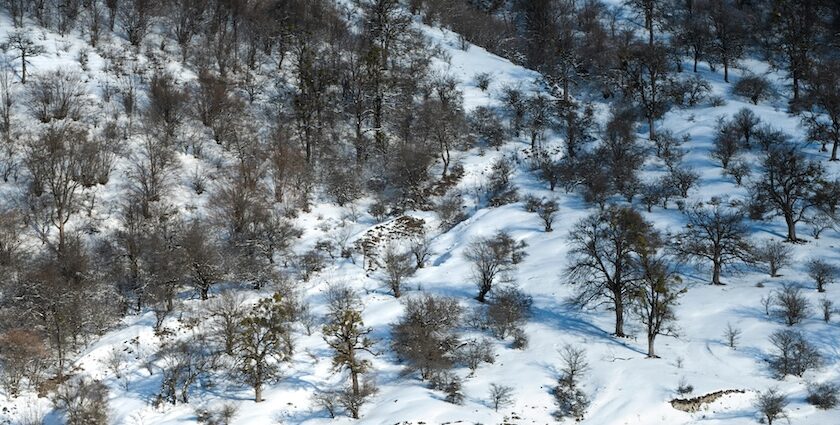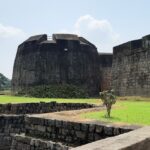There’s something about snowfall in Gangtok that just feels special, softer, quieter, unlike the rest of the Himalayas. The air turns sharper, the streets look calmer, and the hills wear a clean white coat. You won’t find the noisy rush that most hill stations get in winter. Gangtok stays peaceful; its snow season is slow, scenic, and full of warmth from the people who live here. For anyone seeing snow for the first time, Gangtok feels like the right place to begin, a quiet mix of beauty, calm, and a bit of adventure under the wide Himalayan sky.
Quick Details About Snowfall In Gangtok
Elevation: 1,650 metres (5,410 ft) above sea level
Typical First Snowfall: Late December to early January (mostly around Tsomgo Lake & Nathula)
Peak Snow Months: January and February
Winter Temperature: 2°C to 10°C (can drop below freezing near higher passes)
Famous For: Monasteries, mountain views, local markets, and scenic drives
Location
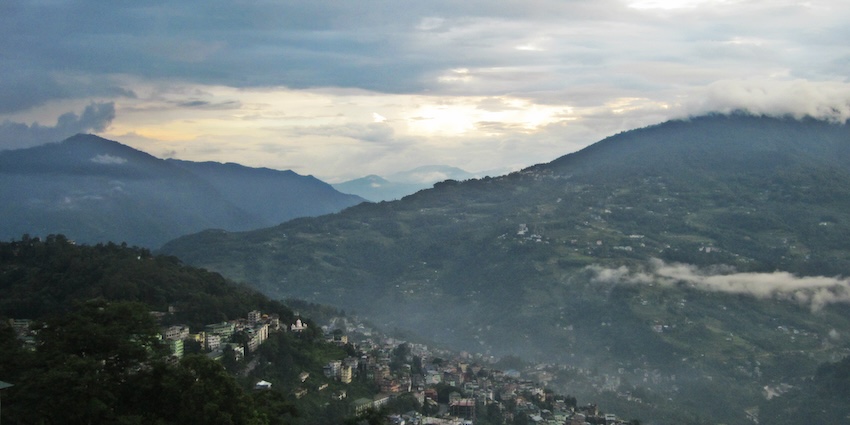
Photo: Piyush Tripathi / Wikimedia Commons
Gangtok rests high in East Sikkim, on a ridge that looks down over the Teesta River Valley. The great Kanchenjunga stands to the west, while gentle hills roll east toward Bhutan. The town winds along steep roads lined with colourful houses and balconies that open to mountain views, making it one of the most striking capitals in the country.
MG Marg is the lively centre of Gangtok, a walking street where cafés spill out onto the pavement and locals gather throughout the day. A short drive uphill takes you to Tashi View Point, Hanuman Tok, and Ganesh Tok, where snow often glints on distant peaks even when the town below stays dry. For those chasing real winter scenes, the higher routes to Tsomgo Lake and Nathula Pass bring you into deep snow through most of the season.
Suggested Read: Offbeat Places Near Gangtok
How To Reach
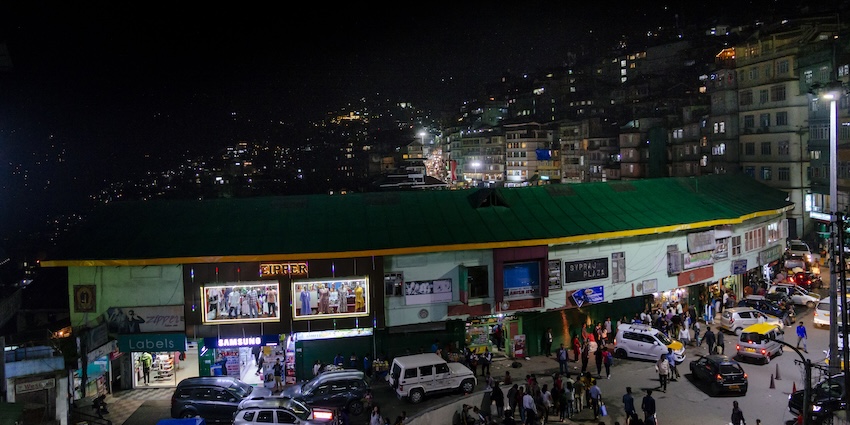
Photo: Subhrajyoti07 / Wikimedia Commons
By Air: Pakyong Airport (about 30 km away) is the closest one. It connects Gangtok with Delhi, Kolkata, and Guwahati, but winter fog often causes last-minute changes. Most travellers prefer flying to Bagdogra Airport in West Bengal, roughly 125 km from the town. From there, you can hire a cab or share a jeep, a drive taking four to five hours.
By Rail: New Jalpaiguri, or NJP, is the nearest railway station, roughly 120 km from Gangtok. Trains from most big cities stop here, so it’s where most visitors begin the hill journey. Once you arrive, you can take a shared cab or hire a private taxi.
By Road: Gangtok is linked to Siliguri through National Highway 10, and the road stays open almost all year. It follows the Teesta River for a long stretch, with small towns like Rangpo and Singtam breaking the distance. Sometimes snowfall blocks the higher passes around Tsomgo or Nathula, but the main highway is rarely affected.
Things To Do During Snowfall In Gangtok
When snow arrives, Gangtok becomes a peaceful retreat rather than a busy hill station. The best part is that snow is never far away. Here’s what you can do during the snowfall season in Gangtok:
1. Visit Snowy Valleys Around Tsomgo Lake
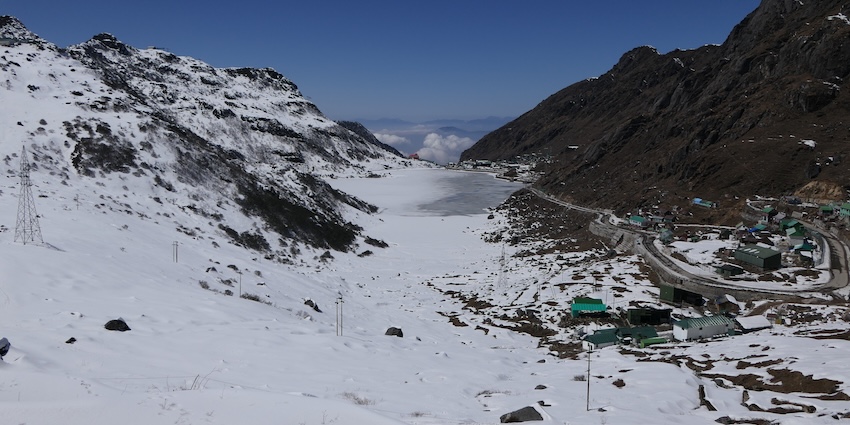
Photo: Dinesh Valke / Wikimedia Commons
Tsomgo Lake, or Changu Lake as locals call it, sits at a height of more than 12,000 feet. During winter, especially from January to March, the lake turns into a sheet of glass, sometimes fully frozen, sometimes broken by thin lines of water that mirror the snowy ridges. Roads twist through pine forests dusted with frost, and prayer flags hang stiff in the cold air. When you reach the lake, yaks wait quietly near the shore, their saddles wrapped in wool for short, slow rides across the edge of the ice. A few small stalls serve tea and steaming noodles, and somehow that warmth feels perfect in this frozen, dreamlike place.
Suggested Read: Tsomgo Lake In May
2. Take A Ropeway Ride Over The Snowy City
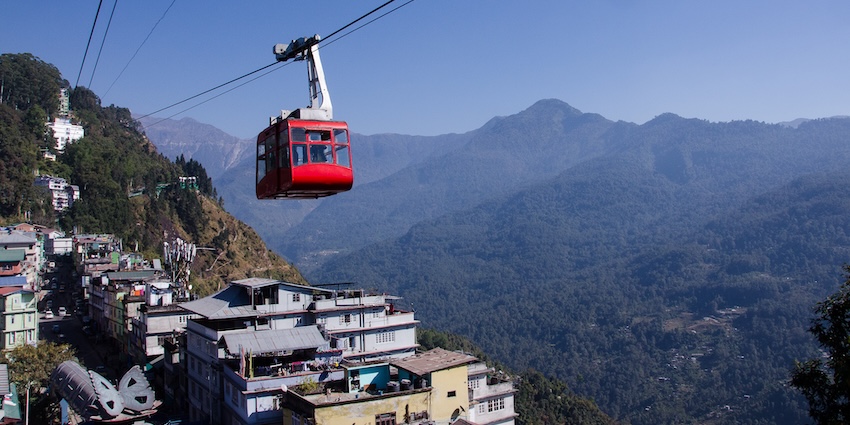
Photo: Aparajita Dasgupta / Wikimedia Commons
The Gangtok Ropeway is one of those things you shouldn’t miss in winter. It runs from Deorali to Tashiling, floating quietly above the city’s steep slopes, rows of bright houses, and strings of prayer flags that turn stiff in the cold. On a clear morning, the view opens wide, and Kanchenjunga stands tall in the distance, glowing white under the sun. When the weather shifts, mist rolls in and the cable car moves right through it, making you feel like you’re drifting above the valley. Each cabin fits about twenty people, and though the ride lasts barely ten minutes, it feels longer because you can’t stop looking around.
Places To Visit In Gangtok During Snowfall
Here are some of the most beautiful and accessible places to visit in Gangtok when the snow arrives:
1. Tsomgo Lake (Changu Lake)
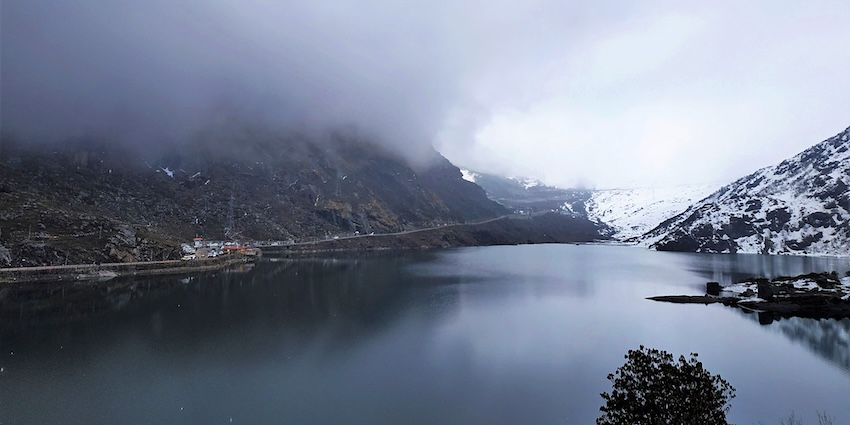
Photo: ANKAN / Wikimedia Commons
Tsomgo Lake becomes the real showstopper once winter sets in. Sitting over 12,000 feet high, the lake often freezes between January and March, turning into a sheet of silver ice surrounded by quiet, snow-filled slopes. Everything around feels still, just white peaks and cold air moving through the pines. People walk along the edge, click photos, or hop on a yak for a slow loop around the lake. A few food stalls nearby serve hot tea and Maggi that somehow taste better in the cold. If you can, reach early in the morning.
Location: On the Gangtok – Nathula Highway, Changu, Gangtok, Sikkim
Timings: 8 AM – 3 PM (morning visits recommended due to fog)
Suggested Read: Tsomgo Lake In June
2. Hanuman Tok
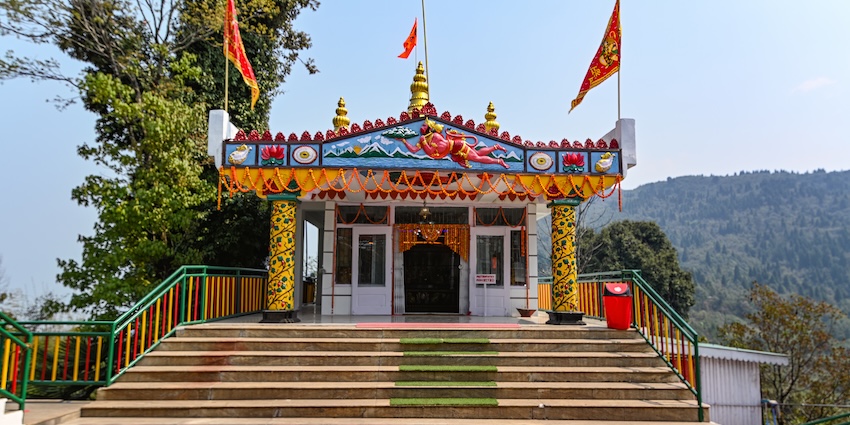
Photo: Anjan Kumar Kundu / Wikimedia Commons
Hanuman Tok sits high above Gangtok, around 7,200 feet up, with one of the best views of the Kanchenjunga range. In winter, when the snow comes in, the place feels almost unreal. The temple, looked after by the Indian Army, stays calm and quiet, with soft chants echoing through the pine trees. When the snowfall in Gangtok begins, the steps and paths leading to the shrine get lightly covered in white, and everything slows down. The air turns sharp and cold, and from the viewing deck, you can see clouds drifting slowly across the frozen ridges.
Location: Near the Royal Cremation Grounds, Bhusuk, Gangtok
Timings: 7 AM – 5 PM
3. MG Marg
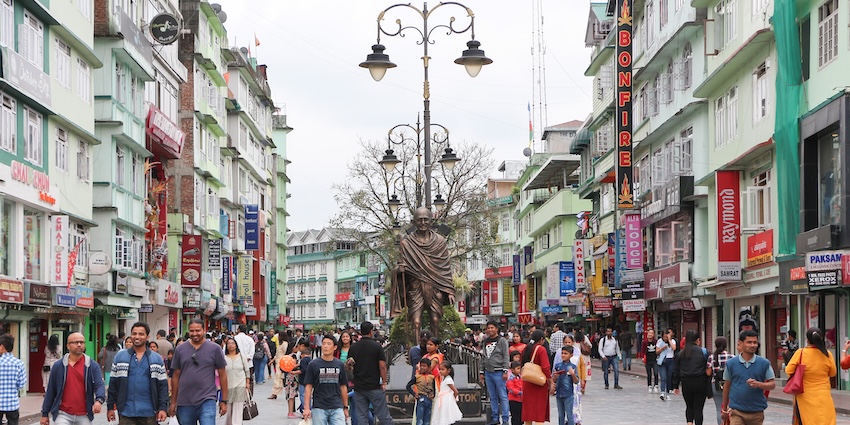
Photo: Bernard Gagnon / Wikimedia Commons
Right in the heart of Gangtok, MG Marg keeps its charm even when winter takes over the hills. Locals and visitors fill the street for evening walks, grabbing hot snacks or just watching life go by. When the temperature drops, a thin mist sometimes rolls through, softening the neon lights and giving the place a dreamy glow. Shops along the street put up bright woollens, handmade trinkets, and prayer wheels, the kind travellers end up taking home. The cafés stay busy with people warming their hands around cups of coffee or bowls of thukpa while soft music spills out from nearby bars.
Location: Mahatma Gandhi Marg, Arithang, Gangtok, Sikkim
Timings: Open all day (shops usually from 9 AM – 9 PM)
Suggested Read: Cosy Cafes In MG Marg Gangtok Serving Local Flavours, Fresh Brews, And Relaxing Ambiance
Where To Stay
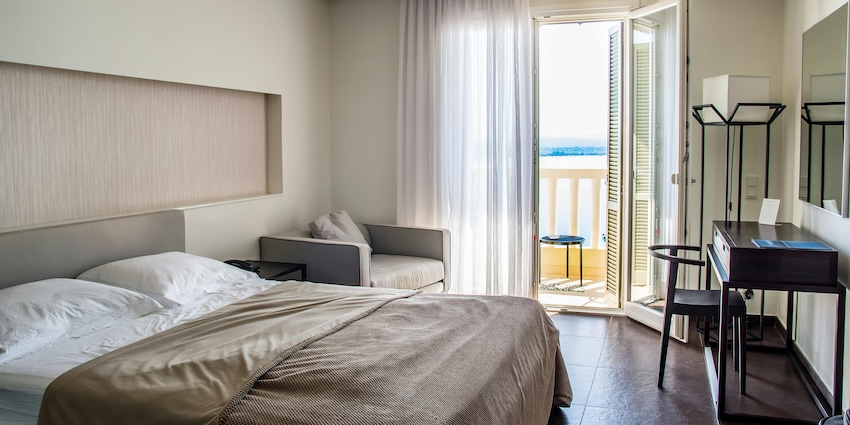
Photo: Pixabay / Pexels / Image For Representation Only
If you want warmth, comfort, and easy access to everything, stay near MG Marg. Hotels like Summit Denzong Hotel & Spa, Netuk House, and The Royal Plaza offer heated rooms, good service, and wide views of the city. For a quieter stay, look at boutique properties around Tadong or Rumtek, places like Mayfair Spa Resort & Casino or Tamarind Residency, where balconies open toward the mountains and evenings often end around a bonfire. Budget travellers will find plenty of homestays in the Development Area and Arithang, usually priced between ₹1,200 and ₹2,500 a night.
Where To Eat
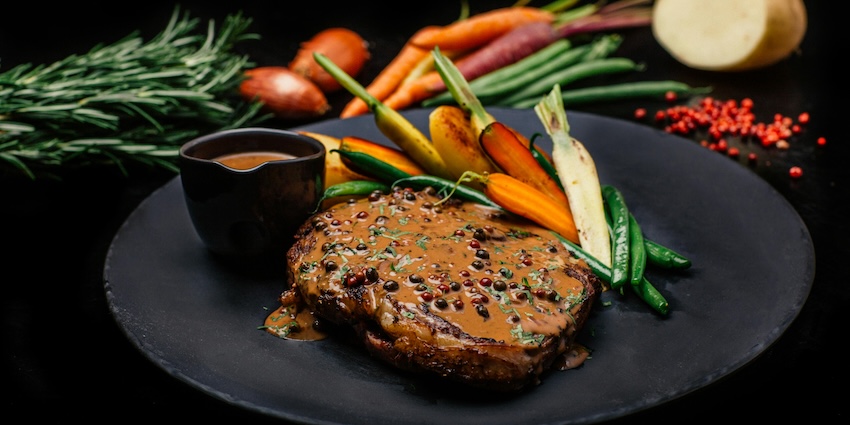
Photo: Mahmoud Salem / Pexels / Image For Representation Only
Winter in Gangtok is all about hearty food and the comfort of warm kitchens. For real Sikkimese and Nepali flavours, Nimtho on MG Marg is a favourite; their thali with gundruk soup and crispy sel roti feels perfect on a cold evening. Baker’s Café is ideal for something lighter, with mountain views, good coffee, and hot chocolate that actually warms you up. Taste of Tibet stays busy for a reason; their momos and thukpa are some of the best in town. If you’re in the mood for street food, walk through Lal Bazaar and try aloo dum or phagshapa straight from the stalls.
Suggested Read: Best Food In Gangtok
Best Time To Visit
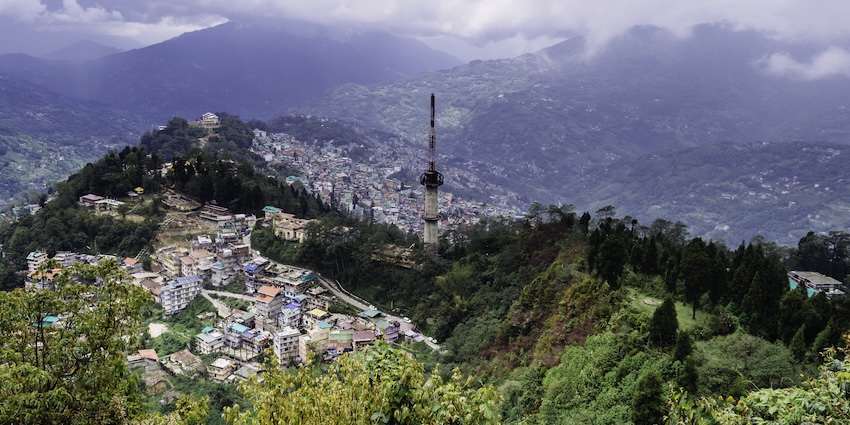
Photo: Subhrajyoti07 / Wikimedia Commons
The best time to see real snowfall in Gangtok is from late December to mid-February. During these weeks, high places like Tsomgo Lake and Nathula Pass stay completely white, and the cold turns even small streams into sheets of ice. Temperatures often drop below freezing, but that’s what makes the views so striking. January usually brings the heaviest snow, great for photography or a bit of adventure. By March, the snow starts to melt, and bright patches of green begin to show in the valleys while the higher slopes stay frosted. It’s the perfect time if you want a mix of snow, sunshine, and open roads.
Tips For Travellers
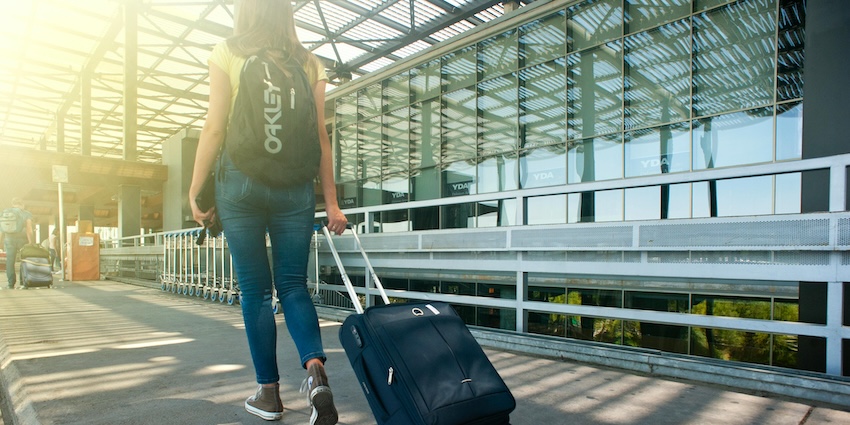
Photo: Atlantic Ambience / Pexels / Image For Representation Only
- Pack proper winter gear, thermals, wool caps, gloves, and snow boots with a good grip.
- Keep a valid photo ID handy; it’s needed for permits to Nathula Pass and Tsomgo Lake.
- Start early for day trips since fog and poor visibility usually roll in after 2 PM.
- Keep some extra cash with you; ATMs in higher areas often run out or stay closed in winter.
- Sip water regularly to stay hydrated and avoid the fatigue that comes with high altitude.
- Before booking, check if your hotel provides heating or electric blankets; nights in Gangtok can get very cold.
- Always check the latest weather updates before heading toward the upper regions.
- If you’re hiring a cab or self-driving vehicle, confirm that the vehicle has snow chains during heavy snowfall.
Suggested Read: Best Things To Do In Gangtok to Delve Deeper Into A Unique Paradise
Snowfall in Gangtok turns Sikkim’s capital into a quiet winter getaway, with frozen lakes, mist-covered monasteries, and long drives through white valleys making it feel like a dream. Whether you’re chasing calm or a bit of adventure, Gangtok gives you both without losing its warmth. Plan your winter trip with TripXL and explore Gangtok’s most stunning snow spots in the magical winter season.
Cover Photo: Павел Хлыстунов / Pexels / Image For Representation Only


 WhatsApp
WhatsApp
 Twitter
Twitter
